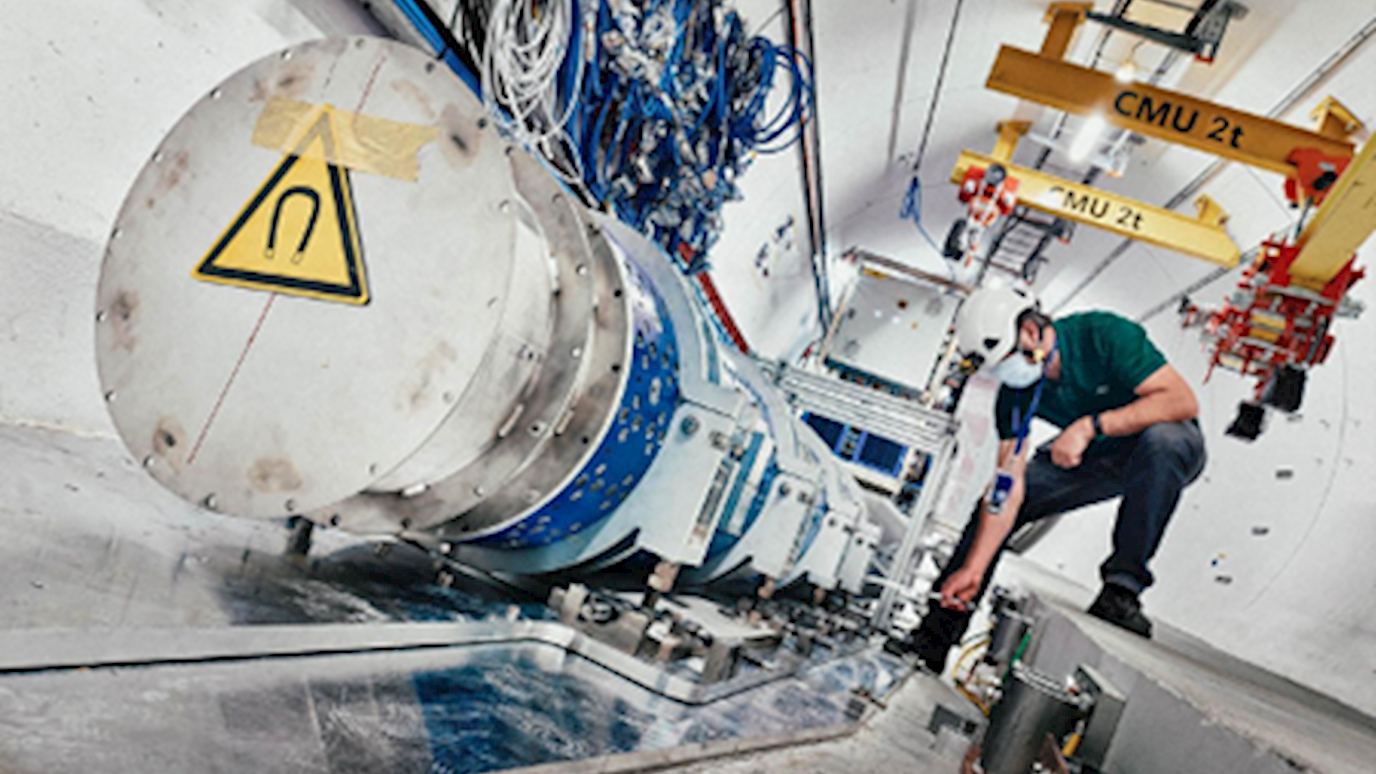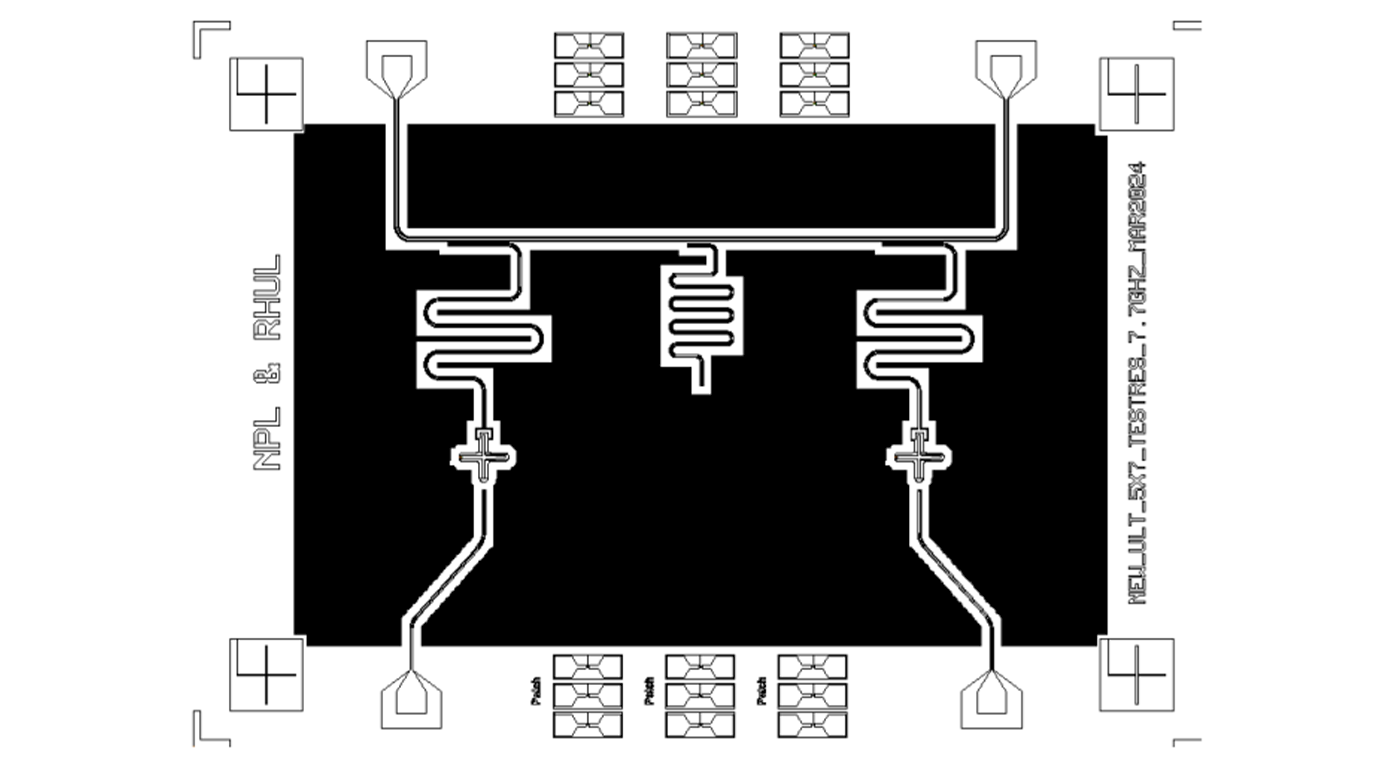A new discovery by an international collaboration including Royal Holloway's Physics department promises to help physicists understand the nature of the universe’s most abundant particle.

The FASER detector, located deep underground at CERN’s Large Hadron Collider
The Forward Search Experiment, FASER, is a brand-new experiment at the European Council for Nuclear Research (CERN) in Geneva, Switzerland, designed to search for light and weakly-interacting new physics particles and detect subatomic neutrinos produced at the Large Hadron Collider (LHC). Unlike other detectors at CERN, such as ATLAS which is several stories tall and weighs thousands of tonnes, FASER is only about one tonne and fits neatly into a small side-tunnel at CERN. It took only a few years to design and construct, using spare parts from other experiments; it was installed in a previously unused tunnel in March 2021, and started taking data in July 2022. Just a few months later, the international Collaboration, which now includes over 80 researchers at the UK Universities (Royal Holloway, Liverpool, Sussex, Manchester) and 21 other partner institutions, announced its first results on Sunday 19 March at the 57th Rencontres de Moriond Electroweak and Unified Theories conference in Italy.
The highlight is the first-time detection of high energy neutrinos created by a particle collider. The discovery promises to deepen scientists’ understanding of the nature of neutrinos, first spotted in 1956, which are the most abundant particles in the cosmos and play a crucial role in our understanding of the Universe, from how the Sun shines, to exploding supernovae.
“Neutrinos have long been produced when smashing together two high-energy particle beams in particle colliders but we are the first to observe them, opening a new source for their study” said Dr Carl Gwilliam, Physics Coordinator of the FASER Collaboration and particle physicist at the University of Liverpool. “The neutrinos detected by FASER are the highest ever energy man-made neutrinos, significantly more energetic than the majority of neutrinos studied by physicists thus far”.
The work could also shed light on cosmic neutrinos that travel large distances and collide with the Earth, providing a window on distant parts of the cosmos. “Neutrinos were a key building block in the successful Standard Model of particle physics. Their detection for the first time at a particle collider is an important milestone, since such high-energy neutrinos provide a complimentary ingredient in understanding exciting particle astrophysics observations” said Prof. Monica D’Onofrio, Head of Research and Team Leader of the FASER group at the University of Liverpool.
"Until now, the existence of neutrinos produced at the LHC could only be inferred from their missing energy in large particle detectors like ATLAS, while the most energetic neutrinos escaped in the direction of the particle accelerator. What makes this result unique is that the FASER detector is placed 480m downstream of ATLAS, which plugs the gap in the far-forward region, so we can directly measure those highly energetic neutrinos for the first time," enthused Professor Stephen Gibson, Head of the Physics Department and Team Leader of the FASER group at Royal Holloway, University of London.
There are lots of open questions about neutrinos - we know they have mass, but our best theory of fundamental particles and their interactions predicts them to be massless. “Previous examples of neutrino detection from different sources have led to deep insights across the fields of particle physics, nuclear physics, and astrophysics,” says Josh McFayden, a particle physicist at University of Sussex. “So what can we learn with these new results from FASER? We don’t know yet! But it opens up a new window to physics beyond our current understanding by being better equipped to study these mysterious particles.”
Beyond neutrinos, one of FASER’s other main objectives is to help identify the particles that make up dark matter, which physicists think comprises the vast majority of matter in the universe, but which have never directly been observed before. The first data analysed by the FASER Collaboration have yet to show signs of dark matter, but have already helped us constraining further new-physics models. “Even a null result is exciting at this stage” says D’Onofrio, “because we know now that FASER has great potential to reach new physics models that have never been explored before, and that is fantastic”. “It’s incredibly satisfying to see these first results from the FASER experiment coming over four years after construction began” adds McFayden. “We are now confident that we’ve built one of the best tools in the world to look for this kind of Dark Matter.”
With the LHC set to begin a new round of particle collisions in a few months, the detector stands ready to record them, should they appear. We’re hoping to see some exciting signals, and if anything appears, we will be ready for it!
























